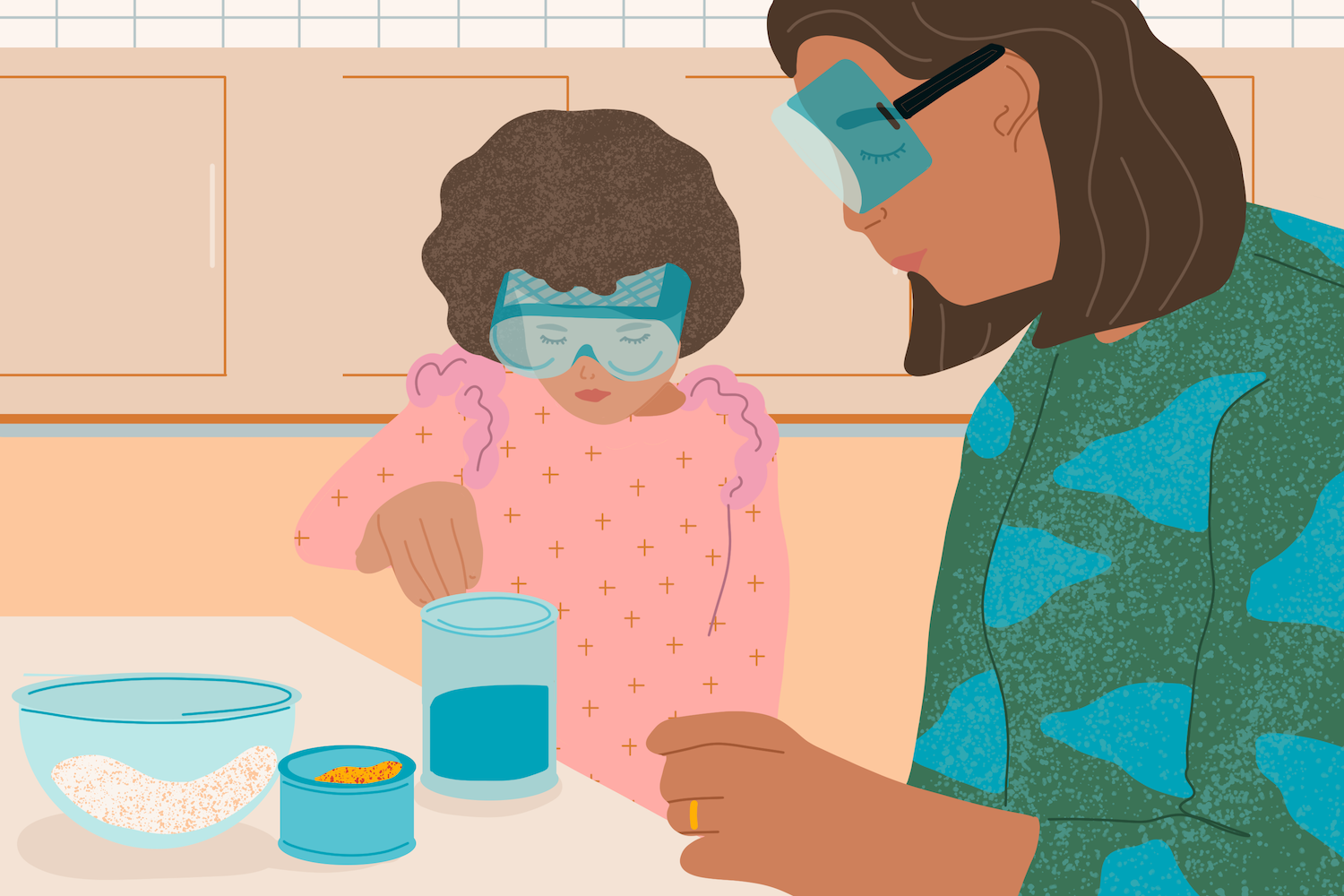
As parents, we want nothing more than to see our kids blossom into young adults who lead an independent, fulfilling, and productive life. I believe encouraging our children to love science can help to get them there, regardless of whether they choose a science-based career or not.
My teenage son and daughter are on their way to achieving their dreams: My son is doing his master's degree in computer science. My daughter is majoring in sociology. I attribute their success to many things, but firmly believe their experience with science has been foundational. Science helped them acquire tools to thrive, helped build their confidence, and it gave them ideas for career options that aligned with what they love doing.
Just look at the scientific method. It teaches kids skills they can apply to everyday situations as they journey from childhood to adulthood: problem-solving, experimenting, decision-making, dealing with failure, gaining perspective, and persevering. These attributes apply way beyond the lab. Scientific principles are a framework for "how-to" navigate life.
But as chief science advocate for 3M, a company that uses science to design and make products for health care workers, consumers, industrial manufacturers, transportation industry, and more, I've overseen four years of global research that reveals many barriers to kids engaging in science. Good new is there is one barrier that all parents can address: According to 3M's 2020 State of Science Index, Millennials and Gen Z over-indexed on feeling discouraged from doing science when they were K-12 students. Parents can provide the antidote to this simply by offering encouragement and making science fun.
The best advice I can give parents for encouraging their kids to love science is to have fun doing simple projects together right at home. If you have a kitchen or a garage, you have your own science lab. What's even better? Kids don't know they are doing science as they bake or build things. They are just having fun.
I recently worked with my company to create resources for parents of kids K-12 designed to encourage science. Called Science at Home, experiments are performed on video and instructions enable you to replicate them at home using everyday household items. Below are some of my favorites to get you started.
Blow Up
Are you in search of some fizzy family fun? Look no further than Inflation Station or "Blow Up." First, help your little scientist fill a balloon halfway with baking soda and an empty water bottle with vinegar. Once complete, stretch the mouth of the balloon over the mouth of the water bottle. Then help guide the baking soda in the balloon to the water bottle to see how the classic chemical reaction can do something useful—blow up a balloon!
Rubber Band Guitar
Michael Bonner, North Carolina teacher of the year and author, helps kids learn about sound by making a rubber band guitar. To assist your child in creating their guitar, attach a paper towel tube to the short end of the box and wrap rubber bands across the tissue box lengthwise. Kids can then begin to pluck the rubber bands, carefully listening to the different sounds each makes.
Liquid Fireworks
Fireworks aren't only for the Fourth of July! Create liquid fireworks using milk, dish soap, and a few other kitchen supplies so your family can experience the amazing effects of fireworks without the fire. Fill a bowl about halfway with milk and put 3 to 4 drops of food coloring near the center. Then, cover one end of a cotton swab in liquid soap and dip that end into the food coloring to see the magic that happens.
Feel Sound
Did you know that you can hear and feel sound? Gitanjali Rao, America's Top Young Scientist of 2017, is ready to teach your family about the frequency of sound and how we perceive pitch. To get started, blow up a balloon and have your kid hold it close to their mouth while saying "Ahhh!." Play around and see what happens when they raise or lower their voice. Can they feel the balloon move?
Create Diffusion
Camille Schrier, a scientist, and the current reigning Miss America, explains how substances move through water to create diffusion in this colorful experiment. Take out two glasses and fill one half full of the coldest water you can get from the tap and the other half full of the hottest water you can get from the tap. At the same time, drop 2 to 3 drops of food coloring in each glass to see how it moves differently in each.
Jayshree Seth, Ph.D. is a corporate scientist and chief science advocate for 3M.
